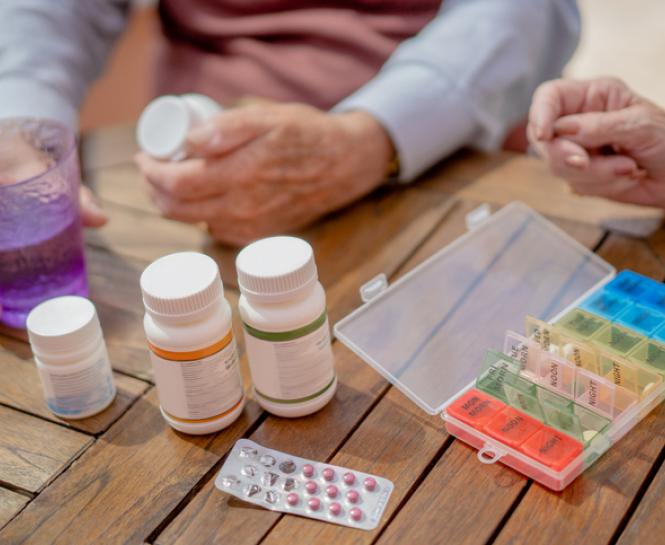“Many people look forward to sunny, warm summer days,” said Angelo Canedo, DO, Catholic Health Family Medicine Physician. “To ensure you safely enjoy your time in the sun, especially on scorching days, learn to recognize the warning signs of heat-related illnesses.”
Dr. Canedo explained that heat-related illnesses can quickly escalate to the level of heat stroke that requires immediate medical attention.
“You can, however, take precautions to help avoid severe complications from being in hot temperatures, like drinking enough water and limiting or avoiding time outside,” he said.
Understanding Common Heat Illnesses
What are heat cramps?
Heat cramps are often the first sign of a heat-related illness. During strenuous activity in a hot environment, they cause muscle spasms or pains in your abdomen, legs or arms.
“Physical activity on a hot day makes you excessively sweat, leading to loss of electrolytes that cause your muscles to cramp,” said Dr. Canedo.
Symptoms of heat cramps include:
- Muscle cramps, especially in your legs or abdomen
- Excessive fatigue
- Heavy sweating during exercise
- Thirst
Follow these steps if you experience heat cramps:
- Drink fluids, preferably with electrolytes.
- Stop all activity and sit quietly in a cool space until you cool down and your temperature drops.
- Avoid strenuous activity for several hours to prevent a relapse.
- Gently stretch and massage the affected area.
“Heat cramps are typically brief and can go away without medical attention,” said Dr. Canedo. “However, you need to seek help if your cramps do not go away within an hour. If left untreated, heat cramps may lead to heat exhaustion.”
What is heat exhaustion?
Heat exhaustion occurs when your body overheats and cannot cool down when you are active in a high-temperature environment, especially when the humidity is high.
“Heat exhaustion usually happens when you are dehydrated,” said Dr. Canedo. “The body needs to replenish fluids and salt.”
He explained that certain people are more likely to be affected by heat exhaustion, including children under the age of four, adults over the age of 65, and those who take certain medications, such as for high blood pressure.
Symptoms of heat exhaustion include:
- Clammy, pale skin
- Confused thinking and mental disorientation
- Dark-colored urine
- Dizziness and nausea
- Fast, weak pulse
- Heavy sweating
- Muscle cramps
- Rapid breathing
Follow these steps if you experience heat cramps:
- Get out of the heat quickly and immediately.
- Find a cool or shady space.
- Take off any binding clothing and apply cool towels to your skin, or take a tepid bath.
- Increase your fluid intake, preferably with drinks that have electrolytes. Avoid drinks with alcohol or caffeine.
- Seek immediate medical help if symptoms continue after 15 minutes. Untreated heat exhaustion can escalate to heat stroke, which is life-threatening.
“Your body will need time to recover from heat exhaustion,” said Dr. Canedo. “Talk to your doctor about when it is safe to resume your normal activities.”
What is heat stroke?
Heat stroke is a life-threatening illness that causes your body temperature to rise to dangerously high levels in minutes. Call 9-1-1 immediately if you or someone you are with shows signs of heat stroke.
Symptoms of heat stroke include:
- Dizziness and nausea
- High body temperature of 103 degrees or more
- Hot, dry skin with no sweat despite the heat
- Rapid, strong pulse
- Unconsciousness
How can I protect myself from heat illnesses?
According to NASA, the summer of 2023 was the hottest on record. The CDC reports that heat-related illnesses led to over 120,000 emergency department visits in the U.S. last year, and more than two-thirds of all Americans were under heat alerts in 2023.
“Being mindful of your environment’s temperature—whether you are home or traveling during the summer months—is important so you can limit your exposure to unhealthy conditions that cause heat illnesses,” said Dr. Canedo.
Tips to help keep you safe include:
- Apply an SPF of at least 15 to block ultraviolet (UV) rays from damaging your skin outdoors.
- Avoid exercising outside in extreme heat. Choose an air-conditioned space instead or exercise when temperatures cool.
- Plan your outdoor activities for early morning or evening when the temperature is cooler.
- Stay hydrated by drinking plenty of water. Avoid drinks with caffeine or alcohol.
- Stick to the shade when outdoors during peak sunlight hours.
- Wear long pants and long-sleeved shirts that protect against the sun’s rays.
- Wear sunglasses that block UV rays.
- Talk to your doctor about medications you are taking that can increase your risk for heat-related illnesses.
- Use cell phone apps or the internet to track your local weather.
- In April 2024, the CDC and the National Oceanic and Atmospheric Administration (NOAA) launched the HeatRisk Forecast Tool. Still in its experimental stage, the tool provides a seven-day heat forecast with color-coded and numbered categories to indicate if hot weather in your area poses health risks.







